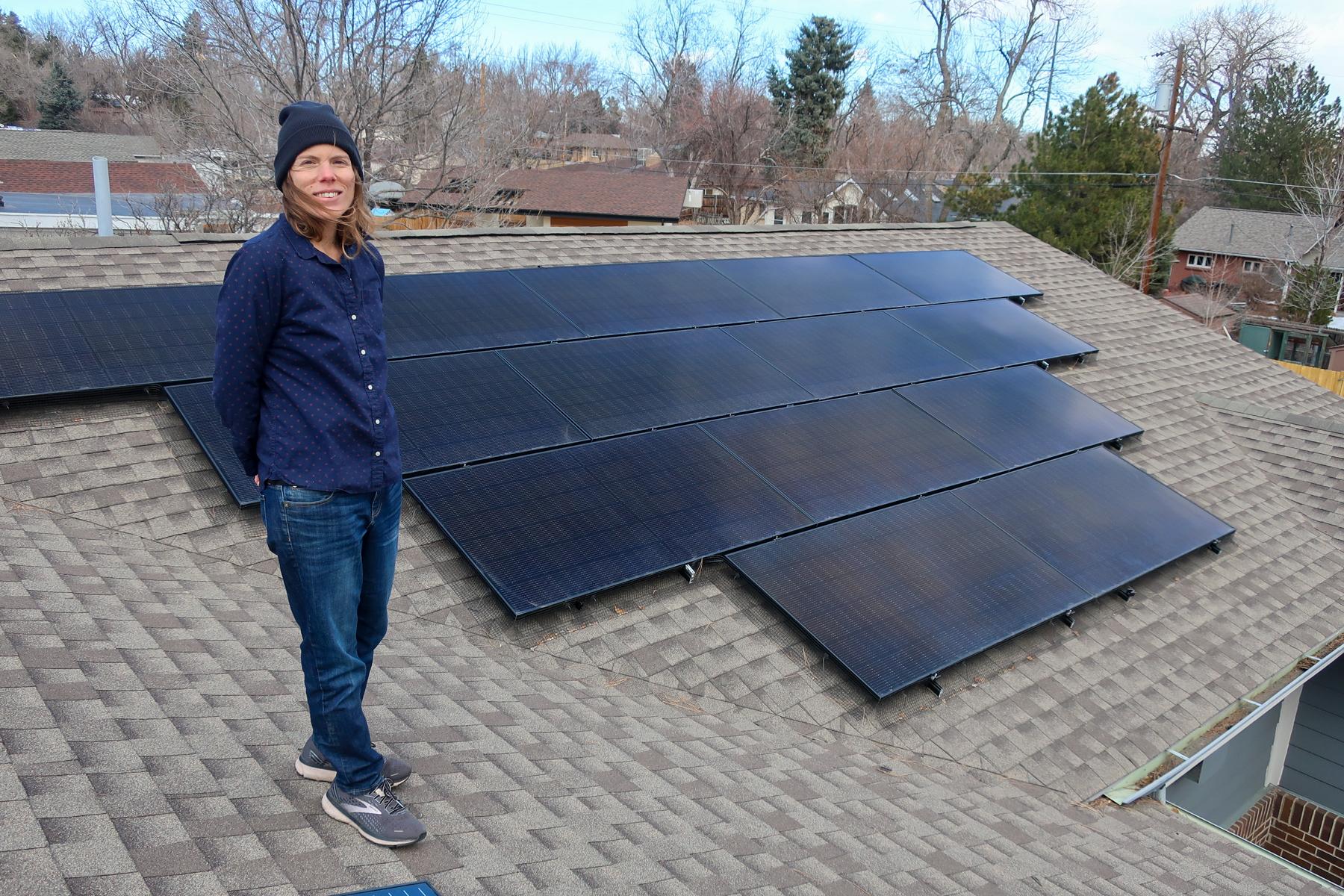
When Lakewood resident Laura Read decided to make her family’s home more environmentally friendly, she invested in a new set of rooftop solar panels. The system, which cost tens of thousands of dollars to buy and install, is strong enough to power her entire home, with extra juice to charge an electric car.
But right now, they aren’t doing anything.
A private contractor installed the panels around Thanksgiving last year. But now, more than three months later, Xcel Energy still hasn’t plugged her home into the statewide grid, causing her to miss out on energy credits and leaving her with loan payments on the panels on top of high winter gas and electric bills.
“It's painful to look up at the solar panels when they aren't doing any work,” Read said. “That energy that they could be generating and putting back into the house and onto the grid is not connected. So they're just waiting.”
The hang-up, according to her contractor, is an issue with her interconnection application — a safety check that Xcel Energy requires all installers to go through before giving the green light to all home solar projects. Read is just one of thousands of Xcel customers across the state to get caught up in delays this winter.
The backlog has prompted some questions to CPR’s Colorado Wonders project, like what’s being done to speed up the process? And why isn’t Xcel being held accountable?
To answer those questions, we have to first understand what caused the backlog.
A perfect storm of demand spike and IT issues
Applications from solar-hungry homeowners began piling up last fall after the passage of the federal Inflation Reduction Act. The legislation included expanded tax incentives for household solar projects, which drove up demand for solar.
At the same time, Xcel launched a new online portal for private contractors in Colorado to submit their interconnection application documentation through.
The portal had bugs and confused many private contractors who hadn’t been trained on the system, said Mike Kruger, president of the Colorado Solar and Storage Association, the state’s largest trade group for installers.
“It was an unmitigated disaster,” Kruger said.
The combination of increased demand and IT issues caused individual applications to pile up.
By the end of 2022, the company had received and completed reviews on more than 18,000 interconnection applications — a 34 percent jump over the previous year. It flat-out rejected 4,000 of them due to mistakes or safety concerns. Many of those people had to make changes and go back in the queue.
At its peak, at least 4,000 people on top of that were stuck in an application review bottleneck in January, according to Xcel. The utility blamed a combination of internal and external processing issues.
As of early March, the company had cleared around 90 percent of the backlog, according to an Xcel spokeswoman. Staff are now trying to fully catch up by mid-March, said Jack Ihle, the utility’s regional vice president of regulatory policy.
“We apologize to those customers who have recently experienced interconnection delays,” Ihle said. “The reviews are a critical step for engineers to ensure systems are safely interconnected to the grid and we're really getting quickly on track.”
The slow churn has been a headache for homeowners and solar panel installers around the state who are used to the application process only taking a few weeks, Kruger said
“We’ve been looking at two months, three months, sometimes six months,” he said. “And that’s extremely frustrating for customers who are looking at their bill and saying, ‘I'm not interconnected, so I can't save anything.’”
Xcel says it’s working on preventing future delays
The utility has hired an additional 20 engineers to process interconnection applications since January. It’s also fixing IT issues with its portal and hosting online seminars for solar panel contractors to familiarize themselves with the system, Ihle said.
His advice to homeowners is to work with your contractor early on to make sure they have an interconnection application complete before spending an arm and a leg to install the panels.
“You wouldn’t pay a contractor to start working on your kitchen without a design plan,” Ihle said.
Regulatory changes to the interconnection process are also underway.
The Colorado Public Utilities Commission tossed around several ideas for tougher guardrails during several meetings in February, including issuing refunds of application fees to customers who have had long delays this winter. Those ideas haven’t been adopted yet, though.
A proposal under consideration now recommends Xcel refund portions of fees to future applicants who see long delays. It also requires the utility to propose its own “performance incentive mechanism” to make the process of hooking up solar panels smoother.
“We appreciate the commissioners’ guidance as we work to balance the importance of the reviews along with the costs of providing them,” Xcel said in a statement.
The plan is already getting some criticism from consumer advocates and Xcel customers who say it’s unfair for Xcel to play such a big role in shaping penalties for itself.
“Xcel has had nothing to lose by delaying connection to customers and we have no choice but to keep paying high electric bills,” said Bonnie Bull, a Grand Junction resident who has waited more than two months to get her interconnection application approved by the utility.
She followed up in late February with her contractor, who told her that the utility still hadn’t approved her installation plans. She hopes to have her panels installed by the end of April and up and running by June.
“So it will have taken seven to eight months for the total process,” Bull said. “I realize there are a lot of people out there who have been waiting for Xcel a lot longer than we have, but why does Xcel get to set their own incentives and penalties?”
Customers say it’s still worth the wait
As she waits to hear back from Xcel, Read, the Lakewood homeowner, says she is paying monthly energy costs around $700 dollars this winter, including loan payments on her $28,000 solar panel system.
“Xcel is a monopoly,” Read said. “We don't have a choice for a utility company. And it is too bad that we don't have a choice of picking cuz it seems like we don't have a lot of power.”
Still, Read, who works as an environmental engineer, said she doesn’t regret her choice to get home solar. Once the switch is flipped, she says she’ll save hundreds of dollars a month.
“I think it’s beneficial for our targets for renewable energy in Colorado and the planet,” she said.
She wants to set an example for other neighbors to make the switch to cleaner energy sources. But she does see an opportunity for an easier process for everyday homeowners to make the switch.
“We should look at legislative action to help set expectations and understand the delays,” she said. “And then how we can then set up financing programs that might help bridge that gap between starting to pay a bunch of money in a loan payoff and not be able to start getting the benefits of the solar insulation.”
On a recent afternoon, she climbed up on her roof to check on the status of her new panels. As the sun shined on them, she turned her head to her front yard and watched an Xcel truck drive by her house, red lights flashing.
“Wait, you forgot about me,” she shouted, laughing.
The truck kept driving until it disappeared down the street.
“Maybe it’ll be my turn soon,” she said.









